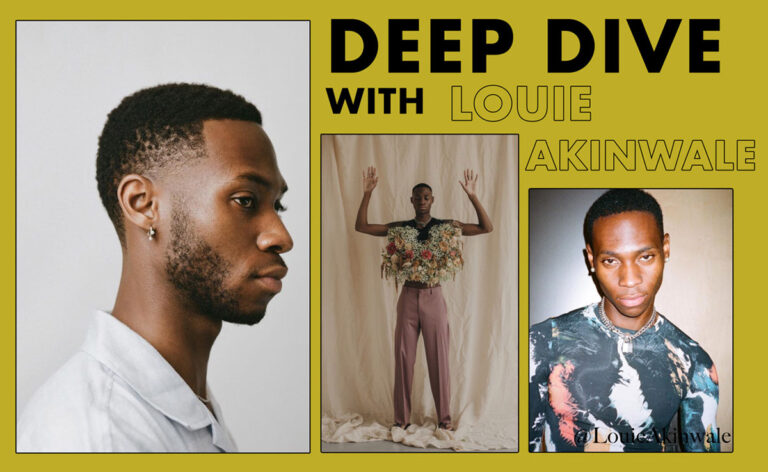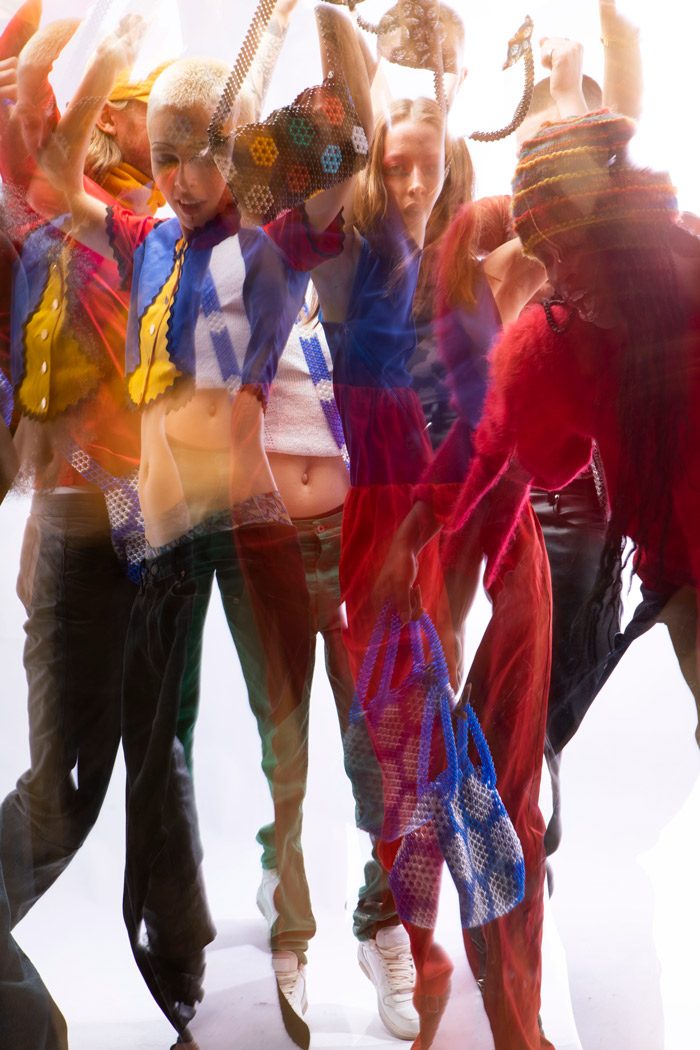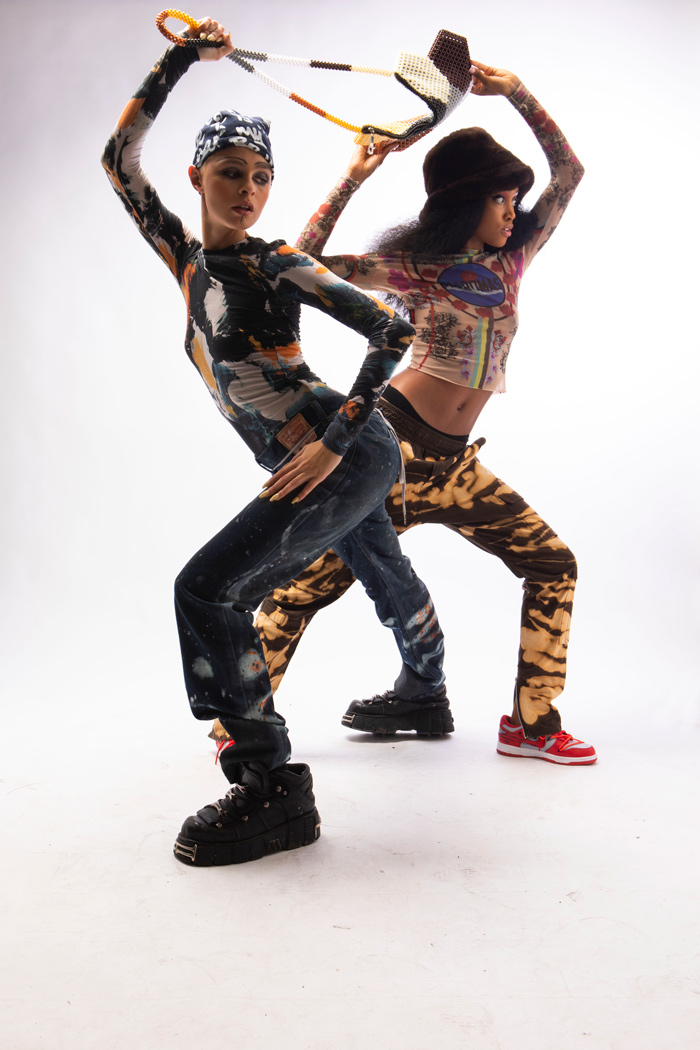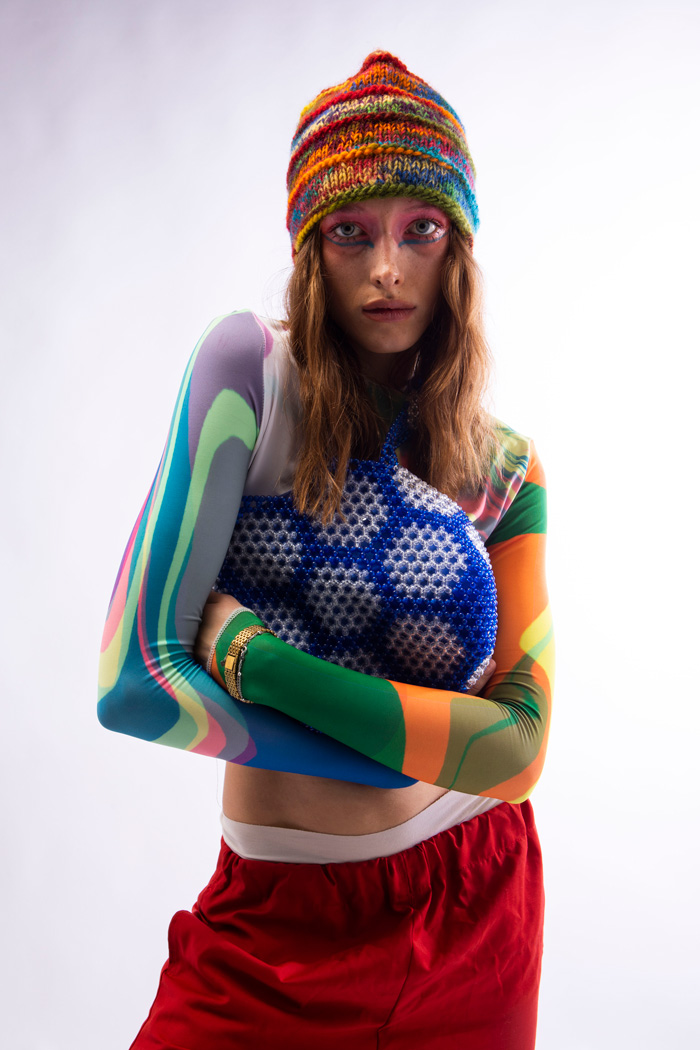Model, art director, entrepreneur Louie Akinwale on successfully launching a multidisciplinary career without compromising on quality

Multidisciplinary careers are something that is being seen a lot more frequently in this day and age: people are starting to purposely ebb and flow through a variety of professional roles, and therefore gaining an array of skills and knowledge in return. This opportunist career may have been born by the rise of the internet, social media, visual cultures or simply travel accessibility. Fundamentally, restrictions in both thought and presence have been lifted by the possibility of choice, and in 2021, there are plenty of choices, to say the least. With or without a global pandemic. Screen Shot spoke to model, art director, entrepreneur (and much more) Louie Akinwale on how he has successfully created a multidisciplinary career for himself, as well as how he built a small business up from an idea, Lu by Lu, even in the midst of COVID-19’s chaos.

When asked to describe who he is and what he does, Akinwale took the entirety of the question into consideration (which accentuates the entire point made in this Deep Dive) and told Screen Shot “Well, my name’s Louie, I’m a model, designer, art director, creative director. I’m fun, vibrant, into fashion. I love music, just all around a happy person I think.”
This approach to not only personal life, but professional life too allows for an intertwining of influences without borders, which can only heighten inspiration in a creative sense because of it. Akinwale agrees, he also looks to the past for what the future holds, “a lot of the music I listen to is from the past. There are these artists called the Lijadu Sisters, they’re twins and play kind of like afro-jazz, and my last collection was inspired by them. They released a series of facial expression photographs in the 70s, and I thought I could incorporate this in my brand somehow in a sense where I’m trying to get across a personality within that sound, so definitely, it all entwines and influences each other.”
The past means that our own small (in the grand scheme of things) lives and more famous movements or influencers, as well as our childhood and experiences since then all shape how we react and create or aspire to be in whatever ‘now’ we live in at any given moment. In the interview, Akinwale reflected on this point and told us that “Even today, this morning, I woke up and I was looking at old school photographs because of a comment someone made on a Clubhouse stream that basically said ‘to really tap into yourself you’ve got to remember who you were as a small child’, so I was looking back. I used to do karate and all kinds of things, and it was amazing to think, wow, that was that me and this here is where I am now as this version of me, at 27, but it’s still the same person.”
Having a multidisciplinary career pushes a childlike and playful approach to whatever professional endeavour you may embark on. It seems to be an attitude that is unafraid to try and learn from any angle possible. This has been an especially challenging year for the entire world, and one that for many has forced people into flexible thinking, as well as proactive action. We spoke to Akinwale about the crossover between the past and future, and what he is doing with all he has learnt this far, now.
“I started off as a model, and have been doing that for three years now. My interest in fashion grew from that, I used to do e-commerce for this brand called Antonioli, I used to thrive off of it, and my interest in fashion just grew. I wanted to do more behind the scenes, I started casting and producing for a few brands during fashion week, I was booking models and I was also still doing the shows too, so it was like a conflict of interests.”

He continued to tell us that “My first modelling show, I was shitting myself. It was for this brand called Orange Culture and they’re Nigerian, I was opening and I was shaking. Since then I’ve done Moncler, Giogio Armani, Moschino, Off-White, Stone Island… McQueen like 2 weeks ago, Viviene Westwood e-commerce, so yeah I’m still going to continue. I’ve been working with really great brands during the pandemic, probably the most work ever actually, but I’ve been so on it, it’s just been crazy. I’m making sure my work, all of my work, is top tier. Lockdown of course has been hard but I really just believe in myself. Long story short, it’s shown me that if this is what’s happening during a lockdown, then I’m gonna be fine. I’ve been so persistent with it, and the free time that I have had, I’ve been able to work on my business Lu by Lu.”
“The brand was birthed out of lockdown, I didn’t know I was going to do this before lockdown. I did it all by myself, website to production to designing. It’s all happened in a year. And before, I had only ever made a pillow in textiles when I was 15. That pillow still exists.”
The start of accessory brand Lu by Lu
What makes a brand successful, more often than not, is the story surrounding it, and Akinwale gave me an inkling of a story that means Lu by Lu will grow in wonderful ways. “It all came from my dad in a way, the first drop for Lu by Lu was called shifting seas, my dad had cancer so when he was ill I obviously suddenly had to face vulnerability, him going from masculine to something quite the opposite. It’s a unisex bag like shifting seas, transcending and also coming from an earthly world and into heaven, so it’s all about fluidity.” He continued to say that “The bag itself being produced doesn’t know if it’s male or female, it’s an object. You become what you choose to be perceived as.”
Voir cette publication sur Instagram
Going back to the past creating the now, Akinwale tells us that “Everything is handmade piece by piece, which is the same as life, like everything I’ve done has, piece by piece, led me to this point. Here we are.”
“My bags are from Nigeria, I’ve grown up in London all my life but I’ve got Nigerian heritage and my parents essentially brought me up to be Nigerian, so when I go to visit it feels like home straight away. I design the bags in London and a lot of my influences are through lights, shapes, circles, fluorescent colours, from Lagos to London.”
Like many more aspects of Akinwale’s career, he tells us that “It all happened by the odds, my mum was a designer, and she was working on a sample of this bag, and I thought to myself, let’s elevate that idea. So I did, and it was kind of a domino effect from there. I started researching Dior in the 80s, Fendi in the 70s, and I’ve just been building my idea with an entwining of influences, and I do a lot of research into the colours that I like and why.” He told us that the process allows him to “flirt with so many different things, generally I pick what’s right and what suits each individual personality of each of the bags.” Contrary to this way of working and arriving at an outcome however, the entrepreneur understands that to place himself within the fashion world “you’ve got to find your audience.”
The realisation of starting a brand in the midst of chaos, not only the repercussions of COVID-19 but Brexit too, Akinwale is flowing through all the motions and seemingly taking the frustrations in his stride, although “shippings are taking forever, it’s of course frustrating. I’m doing all this work and research ready to get this project out into the world and it’s like… I don’t have the product. If I’m having a conversation with someone that could help, people want to see the product, and there have been times that I just don’t have anything physical to show them yet.”
Having an idea, and putting it into action is one thing. Staying motivated consistently enough to make the action birth a product is entirely another thing. We asked how Akinwale manages to do so many different things within one career, because to us it seemed a lot to be juggling, and again, his answer was as multifaceted as his approach to professionalism, “Seeing the sunshine, going outside, every day I see inspiration through everything. I fully enjoy and immerse myself in what I do, in all aspects, I really just love what I’m doing at any given moment and I give it everything I’ve got. I’m happy just doing.”
A day in the life of Akinwale is quite possibly exactly how you would imagine it, “I like mixing it up, I had a shoot last week and an hour later I was working on my bags and then I was promoting it and then I did something else for someone else all in one day, it’s fun and this is how I need to do things, my motivation is just to keep going. I have a really bad attention span, I daydream… it’s ridiculous. And zone out frequently. But I come back, and I try, and that’s the most important thing.”
Belief in something truly does make whatever that might be possible, even if first thought out as impossible, and in the case of starting your own business: Akinwale shows us that first and foremost belief is what has to come as a priority. He manifests that one day, “I want to walk into Selfridges and see Lu by Lu next to Prada.” But furthermore, he places the essence of what he creates on something much bigger than an accessory brand, “I want the bags to create a community and a lifestyle, that’s the main goal here. I want there to be a family around the brand, that’s what I want, a safe space for people to join, not just bags but music, events, workshops, that sort of thing.”
Voir cette publication sur Instagram
Advice on living a multidisciplinary career, and starting a brand
If you need someone to tell you to take the plunge into your passions today, Akinwale tells anyone with a dream to create something, “Just do it, make it happen, if you believe in yourself it’s always going to happen regardless. There are so many times I’ve been knocked down. No matter what, if you really want something, it’s yours. You might hear a few nos along the way but you’re definitely going to get a yes, go with it, have fun with it, enjoy the process, all of it.”
Being authentic is a core theme within Akinwale’s career process, who comments that “In anything, I always come as me, because that’s sustainable. I’ve grown, I’m trying to educate myself, and I’m aware that I’m connecting with different people all the time, and so in that sense, I’ve got to be having the right conversations, I’m so ‘east end’ anyway, but I’m trying to translate myself in the best way that I can.” This statement in particular stood out to me, because it is something that can overwhelm many that embark on the multidisciplinary journey: finding a balance of adjusting your knowledge to fit an audience’s needs while staying true to who you are is fundamental.
Akinwale concludes that “Tips are everywhere, you just have to look for them.” Continuing that “I’ve only got one life to live and I’m doing okay, this is where I am now and I’ve just got to be consistent. Anything could happen, so I’m being humble with how and where I step.”
To sum up, Akinwale is proof that ‘doing it all’ is actually possible, but only if you’re enjoying every step of the way. Staying fulfilled is cause for motivation and staying open to flexibility allows for opportunities.





